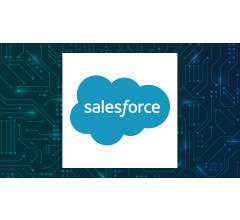If You Invested $2,000 in Salesforce in 2004, This Is How Much You Would Have Today

Salesforce (NYSE: CRM), the largest cloud-based customer relationship management (CRM) company in the world, went public on June 23, 2004. The company, founded five years earlier by former Oracle executive Marc Benioff, attracted lots of attention by replacing desktop-based CRM software with cloud-based services.
Salesforce listed its shares at a split-adjusted price of $2.75 per share, and a $2,000 investment in that initial public offering (IPO) would be worth more than $111,600 today. Let’s see how Salesforce generated those massive gains — and if it still has room to run.

Two decades of rapid growth
From fiscal 2004 to fiscal 2024 (which ended this January), Salesforce’s annual revenue grew at a compound annual growth rate (CAGR) of 34% as its net income increased at a CAGR of 61%. That growth was driven by the rapid adoption of its CRM services and the expansion of its cloud ecosystem with more marketing, e-commerce, analytics, data visualization, and enterprise collaboration services. To support that expansion, it acquired a long list of companies — including Slack, Tableau, MuleSoft, Demandware, ExactTarget, ClickSoftware, and Vlocity.
According to Gartner, Salesforce controlled 22% of the global cloud-based CRM in 2023. Its four closest competitors — Microsoft (NASDAQ: MSFT), Oracle, SAP, and Adobe — each held low- to mid-single-digit shares.
Its high-growth days are ending
Salesforce’s market-leading position in a growing market made it a popular tech stock over the past two decades but sales cooled off significantly over the past three years. Revenue rose 25% in fiscal 2022 but grew just 18% in fiscal 2023 and 11% in fiscal 2024. The company anticipates just 8%-9% revenue growth in fiscal 2025.
Salesforce mainly blamed that slowdown on the macro headwinds that drove many companies to rein in their spending on cloud-based services. But the company also temporarily halted its acquisitions, laid off thousands of employees, and launched its first-ever buyback plan after activist investors besieged its business in early 2023.
From fiscal 2022 to fiscal 2024, the company’s adjusted operating margin rose from 18.7% to 30.5%, free-cash-flow (FCF) margin grew from 19.9% to 27.2%, and adjusted earnings per share (EPS) increased at a CAGR of 31%. It expects adjusted EPS to climb 18%-19% in fiscal 2025 and recently initiated its first dividend with a forward yield of 0.5%.
All of these improvements convinced the activist investors to back off, but Salesforce’s business is clearly maturing as it prioritizes earnings over sales.
What’s next for Salesforce?
Salesforce’s tighter financial discipline is encouraging, but its stock isn’t cheap, relative to its near-term growth at 32 times forward earnings. Microsoft also trades at roughly the same forward multiple, but analysts expect its revenue and adjusted EPS to rise 14% and 15%, respectively, in fiscal 2025 (which starts in July).
In its latest quarter, Microsoft’s Dynamics CRM — which competes against Salesforce — grew revenue 24% year over year in constant-currency terms. Salesforce’s Sales Cloud revenue only rose 10% on the same basis last quarter. That could be a bright red flag that suggests Microsoft’s investment in OpenAI — which allowed it to integrate the start-up’s AI tools into its cloud-based services — is giving it an advantage against its enterprise software competitors.
Salesforce believes it can counter those threats by expanding its own Einstein AI platform. However, it could be difficult to sharpen Einstein’s competitive edge if Salesforce’s management focuses too much on cutting costs and buying back shares.
Will it replicate its gains from the past 20 years?
Salesforce had a great run since its IPO but is gradually aging from a growth play into a mature blue-chip tech stock. Its stock could still head higher over the next few years if it strikes the right balance between growing its sales and expanding its margins, but I doubt it can replicate its massive multibagger gains from the past 20 years.
Should you invest $1,000 in Salesforce right now?
Before you buy stock in Salesforce, consider this:
The Motley Fool Stock Advisor analyst team just identified what they believe are the 10 best stocks for investors to buy now… and Salesforce wasn’t one of them. The 10 stocks that made the cut could produce monster returns in the coming years.
Stock Advisor provides investors with an easy-to-follow blueprint for success, including guidance on building a portfolio, regular updates from analysts, and two new stock picks each month. The Stock Advisor service has more than tripled the return of S&P 500 since 2002*.
*Stock Advisor returns as of March 25, 2024
Leo Sun has positions in Adobe. The Motley Fool has positions in and recommends Adobe, Microsoft, Oracle, and Salesforce. The Motley Fool recommends Gartner and recommends the following options: long January 2026 $395 calls on Microsoft and short January 2026 $405 calls on Microsoft. The Motley Fool has a disclosure policy.
If You Invested $2,000 in Salesforce in 2004, This Is How Much You Would Have Today was originally published by The Motley Fool



